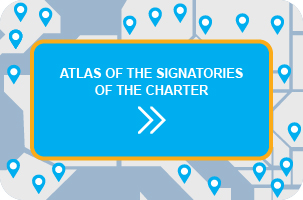Tackling the Gender Pay Gap
The Gender Pay Gap – i.e. the average difference between women and men’s salaries in gross hourly earnings for all employees – remains a concern in the European Union. Even though the differences in salaries have decreased during last decades, women in the EU continue to earn on average around 16 % less than men per hour. This is stated in the brochure “Tackling the gender pay gap in the European Union” launched by the European Commission DG Justice.
The Gender Pay Gap continues to exist even though young women in general are better educated than young men (in 2012 83 % of young women reached at least upper secondary school compared to 77,5 of young men). Moreover, women represent 60 % of the university graduates in the EU.
The gender pay gap also affects pensions. Figures show that women receive pensions that are, in average, 39 % lower than men’s and women over 65 are, to a larger extent, more at risk of poverty than men. The report The Gender Gap in Pensions in the EU highlights these facts and also brings up possible explanations to the differences and includes country studies.
For more information on how the European Union is working with the Gender Pay gap, please visit the EU DG Justice website.
- How can Local and Regional Authorities deal with this issue?
In the guide INET : Professional Equality between men and women : keys to act, elaborated by the students of the National Institute of Territorial studies (INET) in France, several examples are presented on how local and regional authorities can act, as employers to promote gender equality. Regarding income differences between women and men, the guide proposes the following:
Reduce the impact of parental leave on the parents ‘career
- By ensuring that employees do not get lower scores in evaluations by informing managers on parental leave
- By offering possibilities for the employee to follow the development of projects on voluntary basis during their absence, by organizing regular meetings with supervisors after the child’s birth
- By proposing a training schedule to summarise what has been done during the absence of the employee and offer a follow-up to facilitate their return
Reduce the gender pay gap in different sectors
- By offering less part-time jobs in sectors dominated by women such as care and social services
The Brest Métropole Océane urban community council has reduced the number of part time jobs by creating “replacement networks” composed of employees with similar professions. This system helps individuals replacing colleagues and increases their income by combining several posts.
- By reducing differences in salary between technical sectors (dominated by men) and administrative, social, cultural and health care sectors (dominated by women).
The City of Rennes implemented this in the project “Equal Pay for Work of Equal Value”















